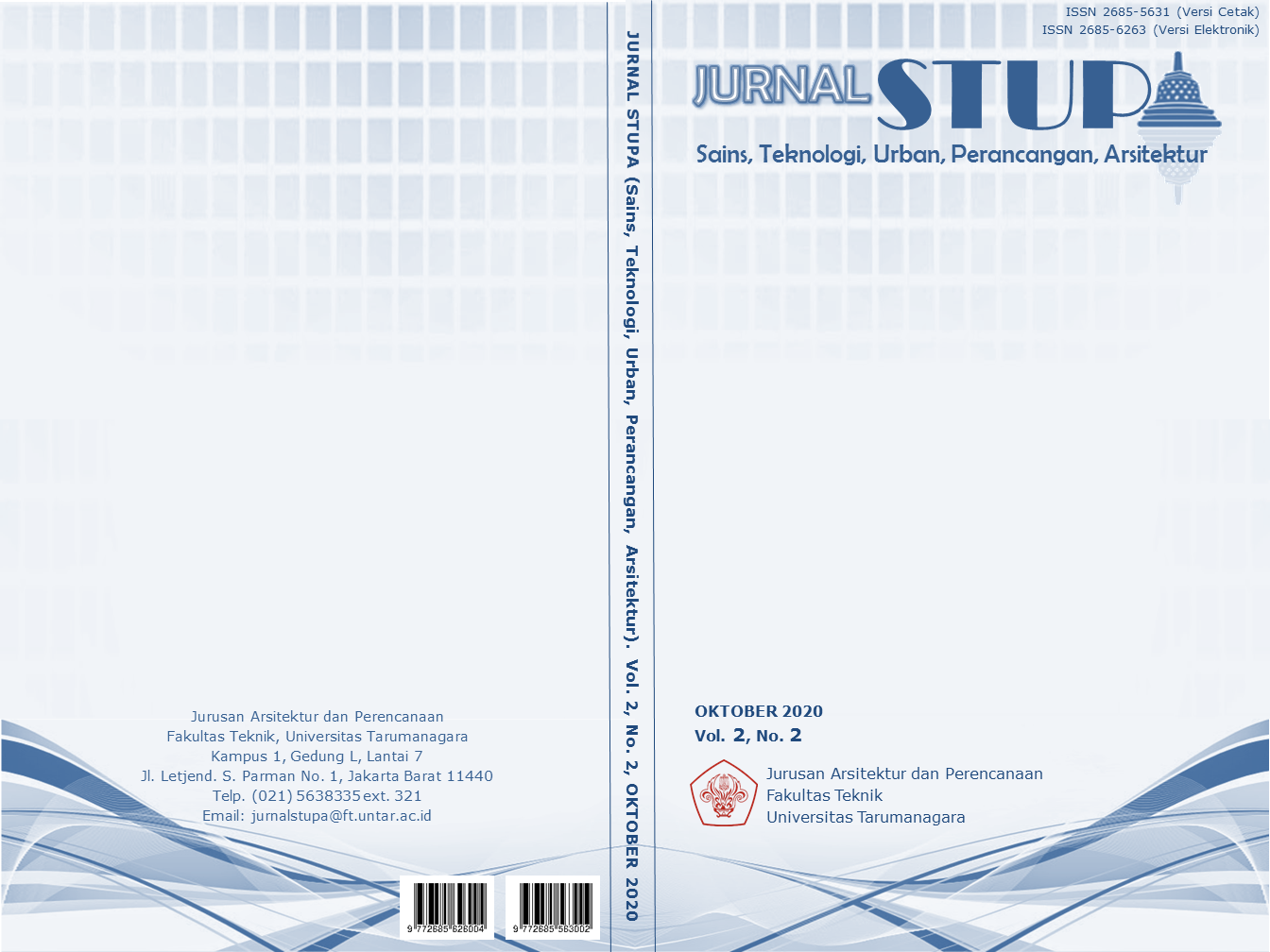GALERI TUBUH DAN RUANG DI MANGGA BESAR
Isi Artikel Utama
Abstrak
Mangga Besar has an image of the region which is famous for its nightlife and culinary tourism in it, this area also has an anomaly that has become a public secret which is a brothel. Taken from the description of the issue of prostitution that embodies, there is a body that connotations are “valued” by certain standard criteria (beauty, sexy, etc.) Similarly, everyday social life is faced with the existence of certain social value standards regarding the appearance and shape of the body as body goals. So that not a few people experience insecurity with their own bodies, and the impact is there are psychological symptoms of low self-acceptance, body shaming, non-equality, etc. The project has a vision to show the diversity of the human body, each body and condition of the human being to create self-identity so that it aims to increase knowledge about body acceptance as a value by supporting the existence of body positivity. By using pattern language method and type of activity space as a typology that hoped it can help to translate the space from the projects background. The mission is to create a space that supports the growth of the community within them with the theme is body and space, which is the relationship between the human body that forms its own space through movements that are formed as expressions of self and where the body here is the main actor of an architectural space. Besides that, it is also used as a third place facility that supports the region, so this gallery has 3 main programs, education, entertainment, and socialize.
Keywords: Body; Community; Expression; Social; Space
Abstrak
Mangga Besar memiliki citra kawasan yang terkenal akan kehidupan malamnya. Kawasan ini juga memiliki anomali yang sudah menjadi rahasia umum yaitu tempat pelacuran. Terambil dari gambaran isu prostitusi yang mewujudkan bahwa adanya tubuh yang secara konotasi “dihargai” dengan kriteria standar tertentu (cantik, sexy, dll). Sama halnya dengan kehidupan sosial sehari-hari yang dihadapi dengan adanya standar nilai sosial tertentu mengenai penampilan dan bentuk tubuh sebagai body goals. Sehingga tak sedikit orang mengalami insecurity dengan tubuh mereka sendiri, dan dampaknya ada gejala psikologis akan self-acceptance yang rendah, body shaming, non-equality, dll. Proyek memiliki visi untuk menunjukkan akan keberagaman tubuh manusia, setiap tubuh dan kondisi manusia mencerminkan identitas diri sehingga bertujuan meningkakan pengetahuan mengenai body acceptance as a value dengan mendukung adanya gerakan body positivity. Misi menciptakan sebuah ruang yang mendukung pertumbuhan komunitas di dalamnya yang bertemakan body and space, yang dimana hubungan antara tubuh manusia yang membentuk ruangnya sendiri melalui gerakan yang terbentuk sebagai ekspresi dari diri dan dimana tubuh disini adalah aktor utama dari sebuah ruang arsitektur. Dengan menerapkan metode pattern laguange dan tipe ruang kegiatan sebagai pola diharapkan dapat membantu menerjemahkan ruang dari visi yang ingin diciptakan. Selain itu dijadikan sebagai fasilitas third place yang menunjang untuk kawasan, sehingga dibentuknya sebuah gallery yang memiliki 3 program utama yaitu adanya education, entertainment, dan socialize.
Rincian Artikel
Referensi
Astarto, M. A. (2008). Hubungan Antara Locus of Control dengan Ketidakpuasan Akan Bentuk Tubuh Remaja Wanita, Sarjana Psikologi Universitas Indonesia. Diunduh 1 Juli 2020, dari http://lib.ui.ac.id/file?file=digital/125494-153.73%20AST%20h%20-%20Hubungan%20Antara-Pendahuluan.pdf
Herlambang, S. (2020, Februari). Open Architecture. Bahan Kuliah Umum di Universitas Tarumanagara, Jakarta, Indonesia.
Jain, S. K. (2017). Dance & Architecture: Choreographing Engagement between Body & Space Dessertation. Published Thesis, Bachelor of Architecture Mumbai University, diunduh 26 Juni 2020, dari https://issuu.com/sukrutijain/docs/dance___architecture_-_choreographi
Journeaux, J., Gorrill, H. & Reed, S. (2020). Body, Space, and Palce in Collaborative Drawing: Drawing Conversations II. New Castle, United Kingdom: Cambridge Scholars Publishing.
Kirnandita, P. (2017), Belajar Mencintai Tubuh Sendiri Itu Seksi, diunduh 3 Juli 2020, dari https://tirto.id/belajar-mencintai-tubuh-sendiri-itu-seksi-cmkl
Kumarawansa, D. (2015). Body, Movement, Architecture. (Published Thesis). Master of Architecture (Professional) School of Architecture, Victoria University of Wellington. Wellington. 9-17
Oldenburg, R. (1999). The Great Good Place. New York: Da Capo Press.
Pallasmaa, J. (3rd Revised edition, 2012.) The Eyes of the skin: Architecture and the sense. New Jersey, United Kingdom: John Wiley & Sons.
Rodriguez, A. S. (2019). The Space Moulded by The Body, Bartlett School of Architecture, United Kingdom, diunduh 1 Juli 2020, dari http://www.interactivearchitecture.org/the-space-moulded-by-the-body.html
Sutanto, A. (2020, Februari). Open Architecture: Third Place. Bahan Kuliah Umum di Univesitas Tarumanagara, Jakarta, Indonesia.
Tjahjono, G. (2000). Metode Perancangan: Suatu Pengantar untuk Arsitek dan Perancang. Depok: Universitas Indonesia.
Uysal, V. and Markus W. (2001). Embodying architecture, studying dance: movement as means of studying bodyspace relationship. Turkey: University of Bilkent.



